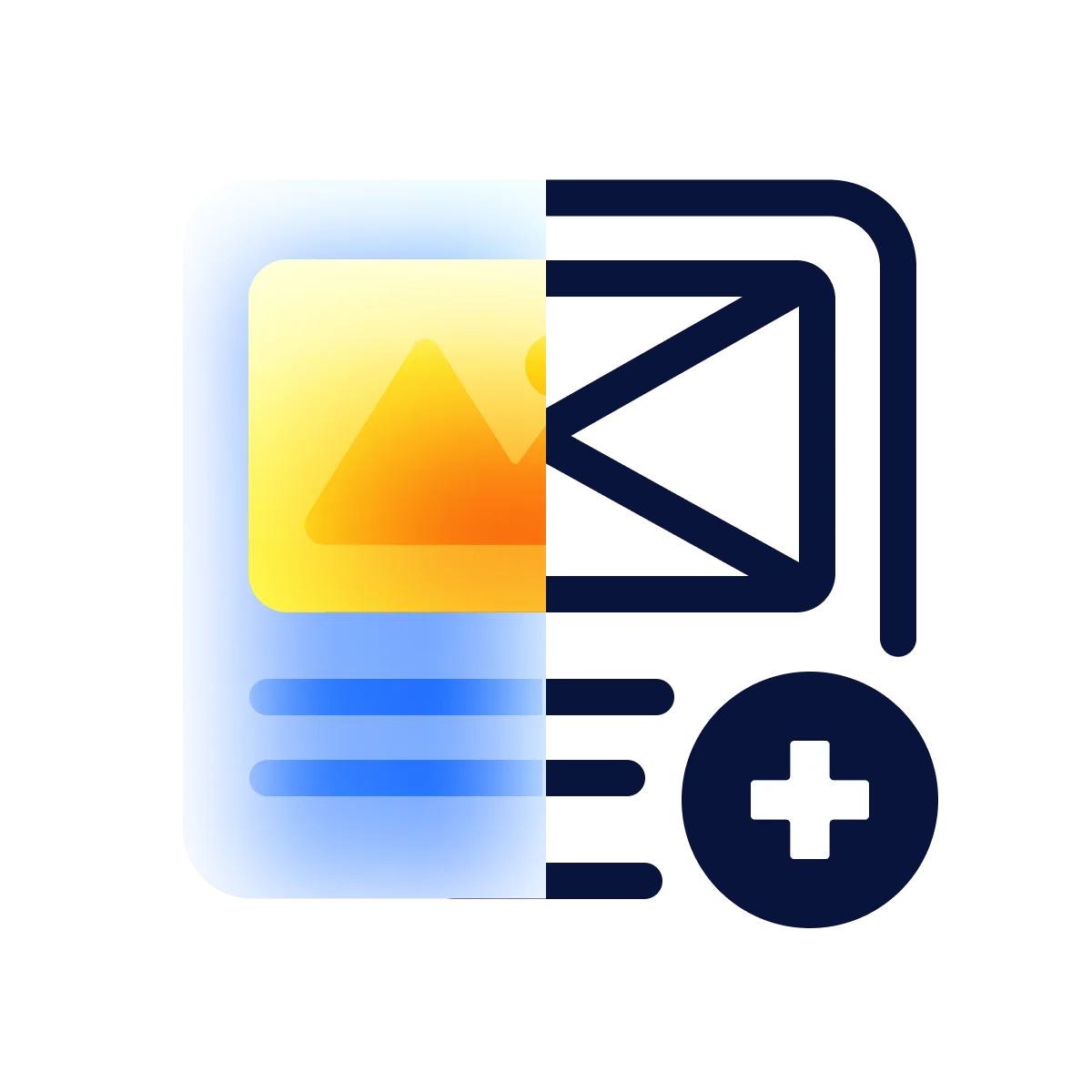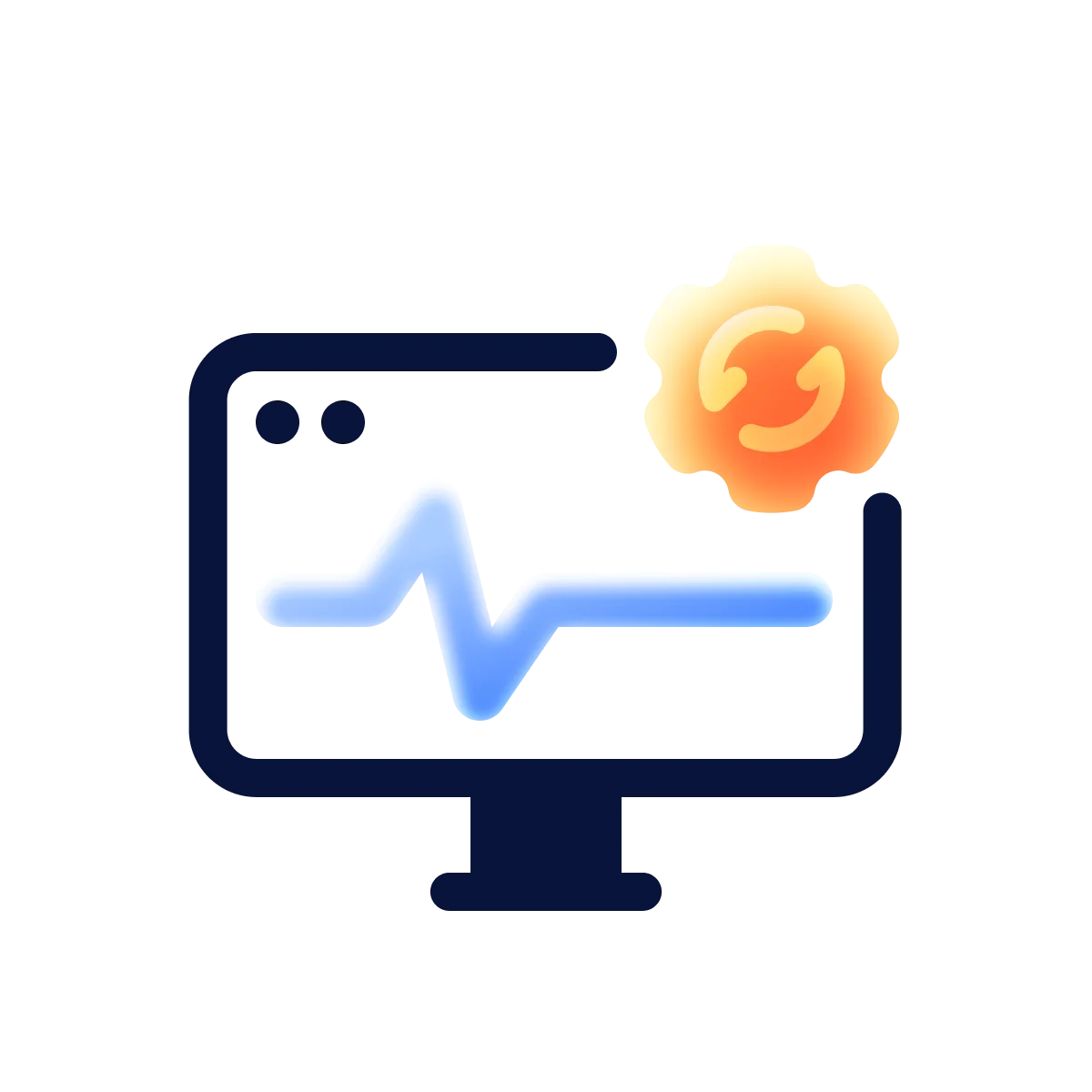When you’re about to showcase your product to the world, there’s always the fear of how the audience will react. Unfortunately, you can’t read people’s minds or launch something and just expect them to go wild over it. Instead, you spend tons of time and resources on research, design, development, and testing.
But the kicker is that even after all that work, there’s no guarantee that your big launch will actually hit the mark. Frustrating, right? You’ve been through so much just to be met with a “meh” from the audience. And believe it or not, this happens more often than you’d think. That’s why, as a company with years of experience, we always recommend turning to an MVP landing page. This strategy can save you from throwing money at an idea that doesn’t sell, and in today’s post, we’re going to explore this more.

What is a landing page MVP?
Startups often face the challenge of connecting with their audience, especially when they don’t yet have a loyal user base. Without that direct feedback, it’s tough to know if your product will truly resonate.
A landing page MVP is a perfect solution in this case. This focused webpage presents the core values of a product idea to real users, allowing you to see how your solution sparks interest. Plus, when you prioritize the essentials, you avoid making huge investments and gain valuable insights for continuous refinement.
“Consider an MVP as your first handshake with the world. This webpage requires minimal resources to test the product’s appeal and potential before you commit to full-fledged development.”
Consider an MVP as your first handshake with the world. This webpage requires minimal resources to test the product’s appeal and potential before you commit to full-fledged development.
<div class="post__style-link">If you’re curious about further benefits of the MVP approach, read our article Why is MVP an excellent choice for your startup?</div>
Why early feedback is crucial for success
Simply put, early feedback guides you in the right direction so you don’t waste time and resources going off-course. Obtaining user input right from the start helps you figure out which features matter to your audience so you won’t get lost in unnecessary details. Thanks to the gathered feedback, you can validate your messaging, design, or overall concept instead of blindly moving forward in the wrong direction.

If you’re looking for a quick and professional way to create your landing page, don’t overlook landing page design services. Our experts know exactly how to craft high-converting solutions without breaking the bank. And when it comes to cost, building an MVP is much cheaper compared to full product development. To get proof of this and see the numbers, check out How much does it cost to build an MVP.
Key elements of an MVP landing page to test your business idea with confidence
To create a well-performing landing page, let’s first break down the key components. In this single place, every element should join forces to communicate the product’s value and motivate action. Researching successful landing page MVP examples could be inspirational. However, tailoring a unique idea is as crucial. To help you with this, in the next sections, we’ll look at key aspects that help attract traffic and convert visitors.
<div class="post__style-link">For a deeper exploration of what makes an effective landing page, refer to our article Anatomy of a landing page: essential elements.</div>
Compelling value proposition
At the heart of your landing page lies your value proposition. This is the message that speaks directly to your audience, showing them why your product is worth their attention. It should be clear and purposeful, answering key questions like “What does this product do?” and “How is it better than the alternatives?” To create a compelling value proposition, keep these points in mind:
- Identify the audience’s pain points;
- Pinpoint the solutions your product offers;
- Highlight key benefits that make you stand out.
In reality, a strong value proposition grabs attention and sticks in the mind. Let’s illustrate this with the example of a workout app. Instead of simply stating, “We sell fitness software,” try something that paints a picture: “Transform your workout journey with personalized plans that evolve as you progress.” A statement like that makes people pause and take notice.
Key features
Once you’ve set a value proposition, the next step is to highlight the core features of your product. Don’t list every specification — the audience won’t be interested in the technical aspect just yet. Alternatively, accentuate features that deliver the most impact. Use appealing icons and animations to make them visually striking and understandable so users can see their value at a glance.

Following our example, you could emphasize features like personalized training plans that adapt to the user’s progress and real-time tracking that keeps them motivated. Dynamic visuals, such as progress bars lighting up or a countdown timer ticking down, can help users visualize how the app enhances their workout experience.
Clear CTA
A clear call-to-action (CTA) is a nudge to visitors, inviting them to make the next move — signing up, leaving their contact info, or exploring your product further. It’s a welcoming gesture that guides users toward making decisions rather than a sales pitch. Thus, the secret to a great CTA is making it feel natural and inviting.
Replace a simple “Submit” button with something more engaging, such as “Unlock early access” or “Join to get exclusive perks”. Choose bold colors to make your CTA pop, but avoid overwhelming the rest of the page. As a result, a well-crafted, concise CTA will have the power to turn casual visitors into valuable customers, helping you gather critical data along the way.
Strong headline
When you’re browsing the web and land on a landing page, what’s the first thing that catches your eye? It’s almost certainly the headline. Indeed, a headline can be a decisive element that influences visitors to stay for more or bounce to the next option. Think of it as a hook to pull users in and keep them interested.

A great headline is short, to the point, and addresses a key problem or need that your audience has. For example, a headline like “Personalized fitness plans — Design your own workouts” immediately communicates value and sparks curiosity. It should instantly tell visitors how your product solves their problem and why they should keep reading.
A headline that resonates will lay the foundation for everything that follows, guiding users smoothly through the rest of your page.
Feedback collection tools
Feedback collection tools are an essential component of any landing page MVP. They allow you to gather insights directly from your audience, giving you the chance to validate your idea and, just as importantly, show your visitors that their opinions matter. For this two-way interaction, you can take advantage of surveys, polls, or simple forms, asking questions that help you understand what your audience really thinks.
There are plenty of options to choose from. Typeform, for instance, provides highly customizable surveys, while Google Forms is a great option for quick, easy-to-fill questionnaires. Select the one that suits your goals the most, and make sure your questions are clear. For example, you could ask, “Which feature excites you the most?” or “What do you feel is missing from this product?” to find the best way forward.
Social proof
Presenting social proof is one way to boost trust among the audience. In fact, people tend to trust a product or service more when they see others, especially real customers, vouching for it. You can’t help but take advantage of this and incorporate customer reviews, testimonials, or even logos of reputable brands you’ve partnered with. Displaying these elements on the landing page helps strengthen your credibility, assuring visitors of the product quality they will benefit from.

When launching a workout app, this approach can make a huge difference. If potential users see that others have reached their fitness goals, they’ll feel more confident about trying it themselves. Here, you could feature before-and-after success stories or user-generated content like progress photos, showing the tangible impact your app has had on people’s lives.
How to get the most out of your MVP landing page
Your journey doesn’t end at building an MVP landing page. More so, the real value comes from what you do next. At this stage, there may be some confusion about how to make the most of the insights you’ve gathered, and in the following sections, we’ll clarify this for you.
Experiment with value propositions
Sometimes, a single value proposition just isn’t enough to nail down what truly resonates with your audience. You might have launched one that you thought would work, only to find that it didn’t perform as expected. This is where the power of experimentation comes in. By testing different versions, you can refine your message, adjust your approach, and highlight different benefits to see what clicks with users.
This process involves tweaking key elements, such as the wording, tone, or focus of your messaging. For example, you might test a more emotional appeal versus a more logical, benefits-driven message. The key is to track engagement metrics such as click-through rates, sign-up numbers, or time spent on the page and see which version sparks the most interest and action.
Measure user interactions
To understand how your MVP is performing, you need to look at the user journey and find out what’s working and what’s not. One powerful tool we highly recommend is Hotjar. It integrates navigation paths, heatmaps, and session recordings to provide a detailed picture of how users interact with your page. If you notice that visitors are dropping off at certain points, you’ll easily spot areas of friction to enhance user experience and adjust product design when necessary.

Offer beta testing
Introducing beta testing gives you a chance to create excitement and investigate how users react to your product. In exchange for providing the audience with early access before an official launch, you’ll gain priceless real-world insights. This feedback can help with fixing bugs, revealing more functionality, or removing undesirable features.
What’s more, involving real users in the process fosters a sense of ownership. These early testers become part of your journey, giving them a stake in the product’s success. These first supporters are more likely to become loyal, engaged users once the product officially launches.
“Beta testing is an invaluable tool for promoting your product, improving it based on user insights, and building a dedicated user base from the start.”
Propose exclusive offers
Establishing a loyal customer base with exclusive offers is a feasible tactic to get the most out of your landing page MVP. Such special deals make every visitor feel valued, encouraging them to take the next move — whether joining a waitlist for gifts or signing up as one of the first users at discounted rates. Additionally, these promotions provide a view of user behavior, helping you develop a marketing strategy for the official product release.

Gather feedback on specific features
When collecting feedback, it’s important to focus on specific features rather than asking broad or generic inquiries. Returning to our example with the workout app, don’t ask broad questions like, “What do you think of the app?” Focus on more targeted questions, such as, “How useful do you find the activity tracker?” or “What makes the workout planner more effective for you?”
Broad questions won’t lead you to a product design that’s on par with user expectations. However, asking for feedback directly about a feature will.
You can take it a step further by suggesting potential new features and asking if users would like to see them included. For this, you might ask, “Would you be interested in a community feature where you can share progress with others?” This helps ensure your product features align with real needs and evolve into something users can rely on.
Run A/B testing
If you want to experiment with different elements for your MVP, A/B testing is an advisable solution. With this approach, you create two (or more) variations of the same page and compare what performs better — a bold vs. cursive headline or striking vs. warm colored CTA. You’ll be able to see the differences in performance instantly and choose the option that resonates best. For a broader approach to user testing, check out our article Why you need user testing.

Track key conversion rates
Conversion rates are a crucial measure of how well casual visitors turn into action-takers or, ideally, engaged customers. Important metrics to track include sign-ups, form submissions, or downloads, which signify areas that need improvement. For example, when you see high traffic on the landing page but low clicks on the CTA button, the issue may lie in the messaging or design.
If you want to explore more content on tracking conversion rates, continue reading our article How to create custom reports in Google Analytics 4? for expert tips on tailoring analytics. Alternatively, if you’d prefer to leave it to the experts, consider our conversion rate optimization services. We’re here to help you take your conversions to the next level with proven optimization strategies.
Build smarter with MVP insights
That’s a wrap! Now you know exactly what it takes to create a page that will bring in loyal customers. But hey, if you want to make sure everything is done right from the start — and avoid any of those “oops” moments — don’t hesitate to reach out to our MVP development services. We’ve got the tools, the experience, and the tricks up our sleeves to help you build something truly special (and we go way deeper than popups and CTAs). Start small and test big with your landing page MVP!
in your mind?
Let’s communicate.
























.webp)




